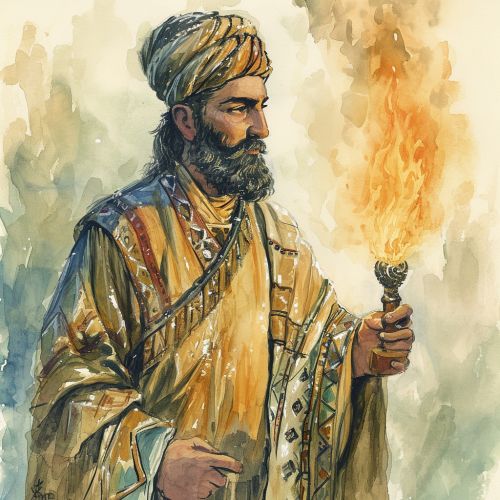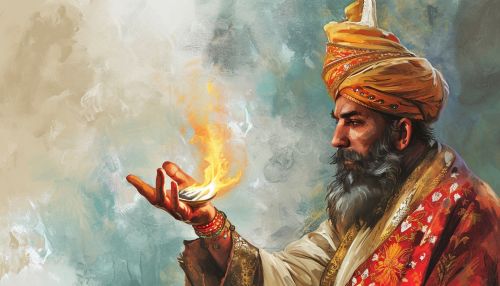Zoroaster
Early Life and Background
Zoroaster, also known as Zarathustra, was an ancient Iranian spiritual leader who founded what is now known as Zoroastrianism. The precise date and place of Zoroaster's birth remain uncertain, with scholarly estimates ranging from the 10th to the 6th century BCE. He was born into a Bronze Age culture with a polytheistic religion, which included animal sacrifice and the ritual use of intoxicants.


This culture was quite similar to the early Hindu Vedic religion. Zoroaster's birthplace also remains uncertain, with possible locations cited as somewhere in northeastern Iran or southwestern Afghanistan. He was likely a member of the priestly class, but his teachings challenged the existing religious order, making him a controversial figure.
Teachings
Zoroaster's teachings focused on monotheism, and he espoused worship of a single deity, Ahura Mazda. He maintained that Ahura Mazda was the one uncreated Creator, to whom all worship was ultimately directed. Zoroaster's ideas led to a formal religion bearing his name by about the 6th century BCE and have influenced other major religions, including Judaism, Christianity, and Islam.
Zoroaster's teachings also centered around the concepts of good and evil. He proposed that humans had the free will to choose between the two, and this choice would determine their afterlife. This dualistic cosmology influenced later religious thought, particularly Gnosticism.
Influence and Legacy
Zoroaster's ideas, as expressed in the Gathas and the Avesta, the sacred texts of Zoroastrianism, have had a significant influence on later religious and philosophical systems. His concept of monotheism and his ideas about good and evil have been particularly influential.
Zoroastrianism was the state religion of various Persian empires until the 7th century CE and has survived in parts of Iran and India. It has had a significant influence on the history and culture of these regions.
